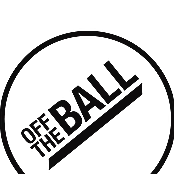Seán Crosson appeared on Tuesday's OTB AM to discuss the release of his new book, Gaelic Games on Film.
Inspired by a request from a friend, Seán Crosson set out to discover the portrayal of Gaelic games on film.
"I didn’t really have great expectations but it began as a curiosity that then was an extraordinary kind of discovery of the record that survived," Crosson explained, "going right back to 1914 with the earliest footage we have.
"Then the extraordinary work that the National Film Institute did from the ‘40s on and then, Gael Linn and others subsequently did to preserve the moving image history of extraordinary players."
Delving into one of the oldest known recordings of Gaelic games on film, Knocknagow, a 1918 film adaptation of a famous book by the same name, showed the first GAA in a fictional film and the first hurling in any film.
"It’s an attempt to capture hurling in the very early 20th century, as it was played back 50/60 years earlier," Crosson explained.
"So it’s even going back again in terms of capturing the way in which the game was played, the shape of the hurley stick, the clothing and so on.
"Looking at it now, it’s an extraordinarily important record for that period for us today to get a sense of hurling at the time."
Moving on to Hollywood films in the 1930s, and an MGM hurling film portrayed the native Irish sport in a less than flattering light: “[It's] a sort of athletic manslaughter ... Watch your head mister, here comes a club… mmm, how nice."
Crosson explained that the clip reflected the stereotype at the time that mixed being Irish with violence.
"It reflects a stereotype of the time and perhaps one that still persists of the Irish as having this particular propensity to violence," he noted.
"This is a short from MGM but if you look across that period in the 1930s, the gangster genre, you find people like James Cagney who famously associated with the Irish American criminal."
"It’s also part of a larger context around sport and film in that period in the ’30s. You have great sports films in that period… there’s a suggestion of violence but there’s also comedy, they’re using it for the comic potential and it’s in that context as well."
1958 brought about the movie Rooney, which Crossan said fell short of portraying the game accurately but captured Dublin at the time very well.
"In terms of capturing Dublin in the 1950s, I think it’s still a fascinating record of that period. This is one of the things that were criticised, as you can imagine at the time, was again that association of hurling with violence."
Following on from that time, however, Irish film began to focus on Gaelic Games and that allowed the portrayal of the sports to extend beyond previous violent connotations.
"From the ’40s on, indigenous, Irish-made productions increasingly focused on Gaelic Games.
"In a way, we had the opportunity to film our own games and bring an authenticity and integrity to that, which was not about using them to affirm or to connect to stereotypes like this one here of violence and fighting but about capturing what the central role these sports played in Irish life."
Crossan still believes that the negative connection between violence and hurling exists with films like Blitz (2011) portraying a hurl as a weapon, first and foremost.
The film sees Jason Statham using the hurl as a weapon: "This, lads, is a hurley. Used in the Irish game of hurling. A cross between hockey and murder… If you’re picking the wrong fight, at least pick the right weapon."
Written by Hugh Farrell
Download the brand new GoLoud App in the Play Store & App Store right now! We've got you covered!
Subscribe to OffTheBall's YouTube channel for more videos, like us on Facebook or follow us on Twitter for the latest sporting news and content.







